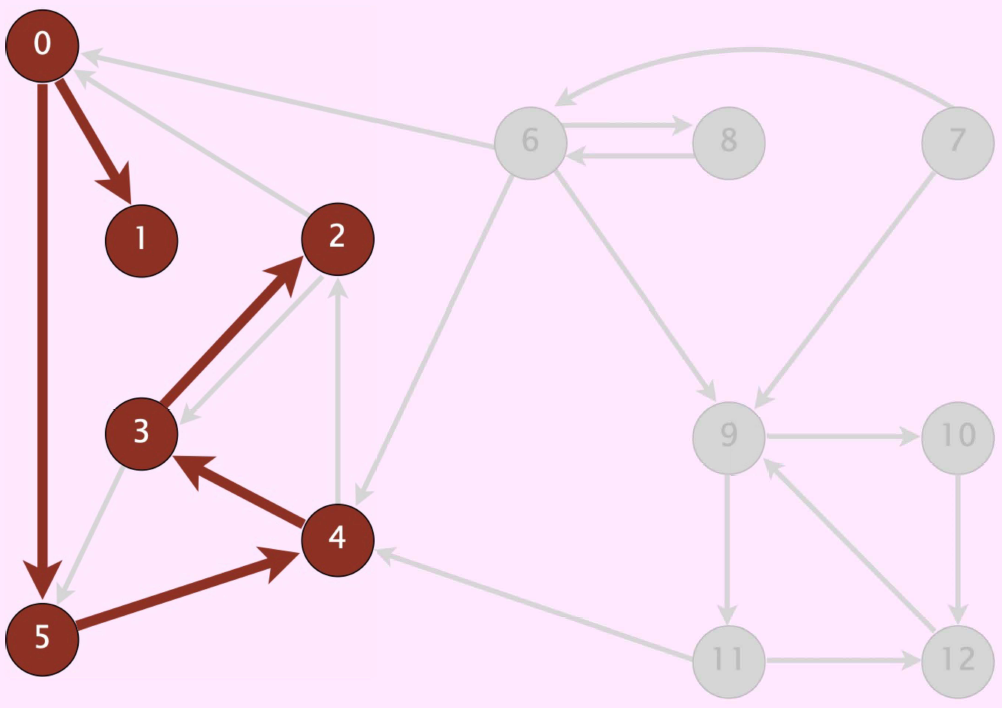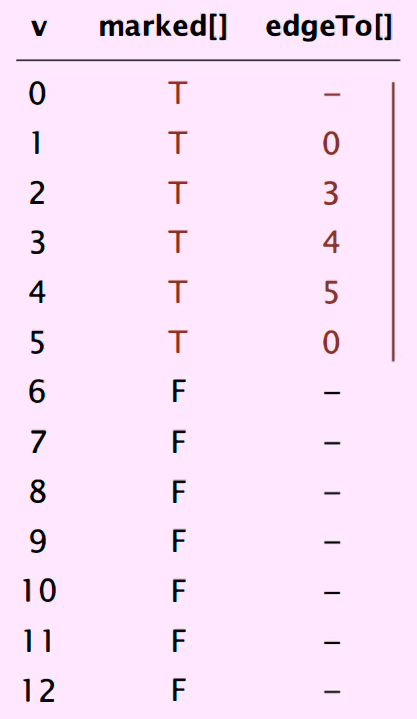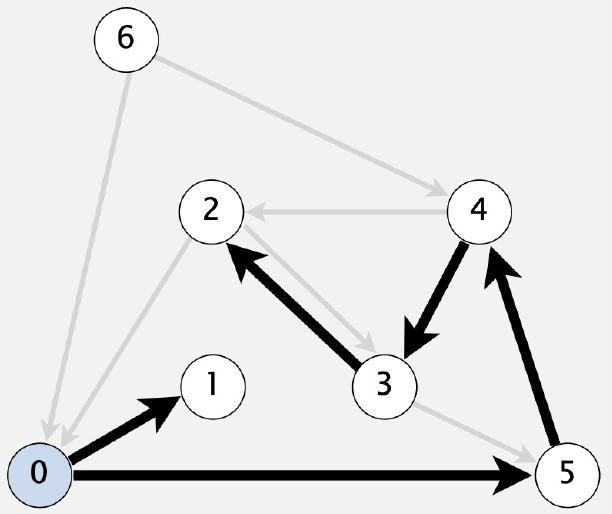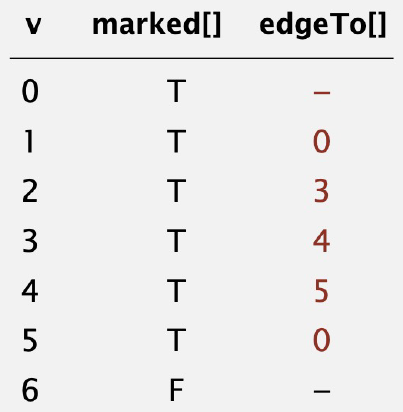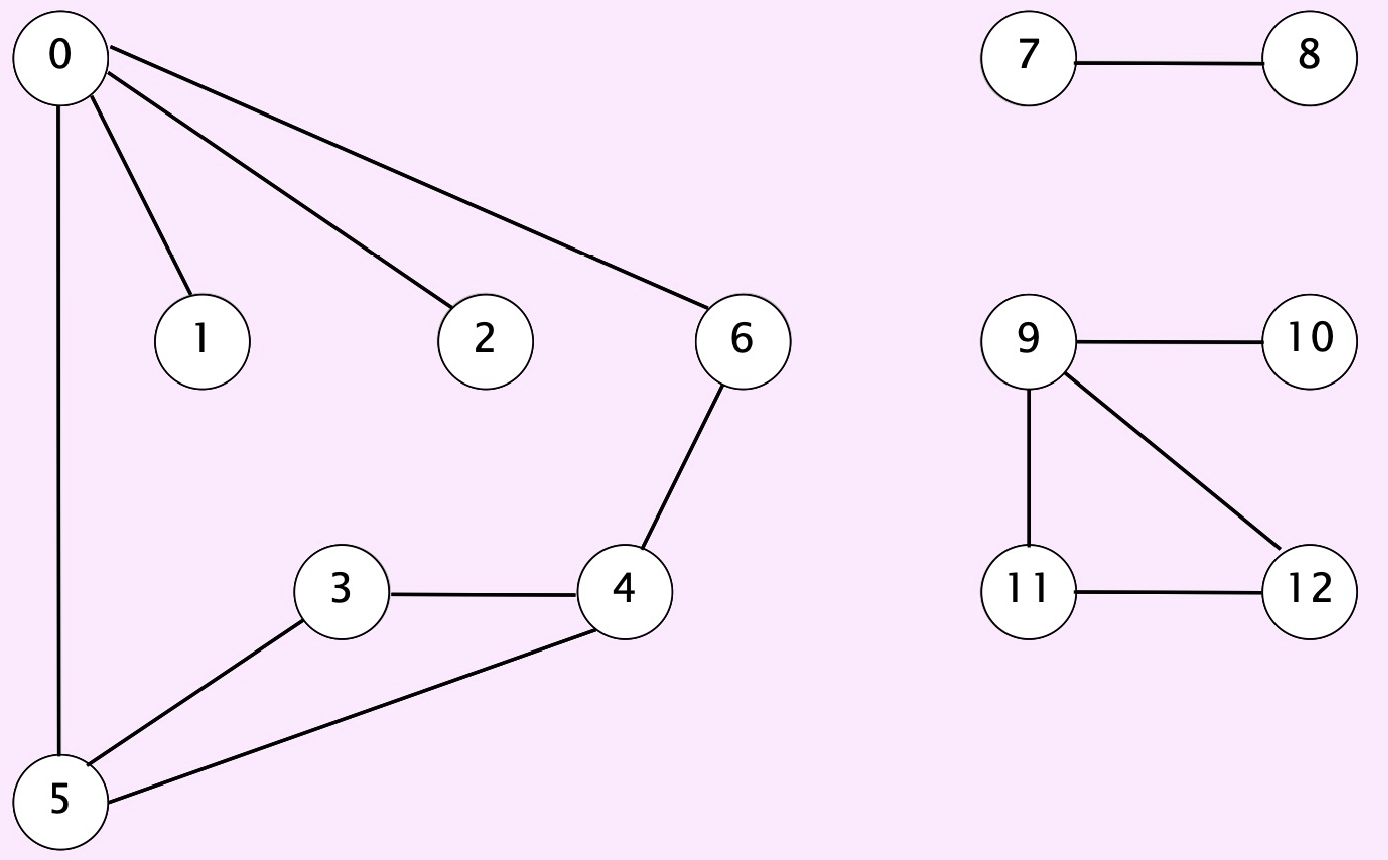Graphs : Depth-First Search#
Depth-first search (DFS) is a graph traversal algorithm that visits all the vertices in a graph by exploring as far as possible along each branch before backtracking. DFS starts at a specified vertex (the starting vertex) and then follows one of its edges to an adjacent vertex. It then recursively applies the same process to the adjacent vertex, and continues until it reaches a dead end (i.e., a vertex with no unvisited adjacent vertices). It then backtracks to the most recently visited vertex with unvisited adjacent vertices, and repeats the process until all vertices have been visited.
DFS can be used to perform a variety of operations on a graph, such as finding a path between two vertices, checking whether the graph is connected, and identifying cycles in the graph. DFS can also be modified to search for solutions in a problem space, such as finding the shortest path between two points in a maze.
DFS can be implemented using either a recursive or iterative approach. The recursive approach uses a function call stack to keep track of the visited vertices and backtrack when necessary. The iterative approach uses a stack data structure to keep track of the visited vertices and their adjacent vertices.
Overall, DFS is an important algorithm in graph theory and is widely used in many applications, such as network analysis, data mining, and artificial intelligence.
DFS#
- Problem#
Given a digraph \(G\) and vertex \(s\), find all the vertices reachable from \(s\)
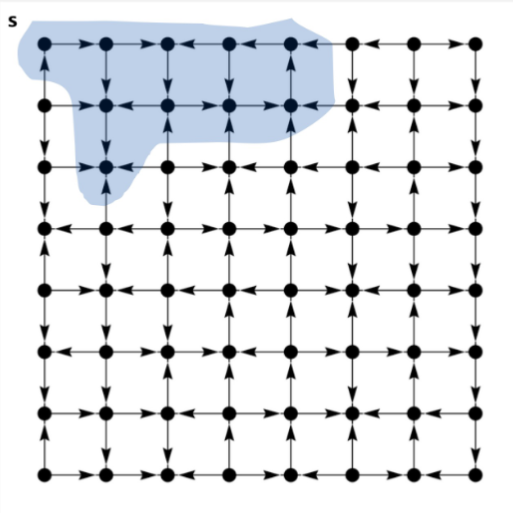
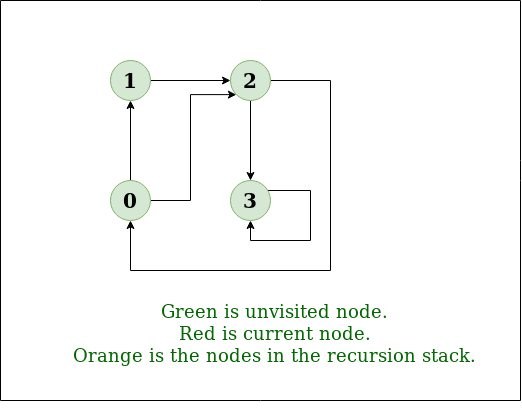
- Goal#
Systemically traverse a digraph
void Graph::dfs( Vertex v )
{
v.visited = true;
for each Vertex w adjacent to v
if( !w.visited )
dfs( w );
}
- Typical applications#
Reachability: finding all vertices reachable from a given vertex
Path finding: find directed path from one vertex to another
- To visit vertex \(v\): #
Mark vertex \(v\)
Recursively visit all unmarked vertices adjacent from \(v\)

Fig. 75 directed dfs#
- Proposition#
DFS marks all vertices reachable from \(s\) in \(\Theta(E+V)\) time in the worst case
- Proof#
Initializing an array of length \(v\) takes \(\Theta(V)\) time
Each vertex is visited at most once
Visiting a vertex takes time proportional to its outdegree:
- Note#
If all vertices are reachable from \(s\), then \(E \ge V - 1\), so \(V\) is a lower-order term
Mark-sweep garbage collection
- Every program is a digraph#
Vertex = basic block of instructions (straight-line program) Edge = jump
- Roots#
Objects known to be directly accessible by a program (eg stack frame)
- Reachable objects#
Objects indirectly accessible by program (starting at a root and following a chain of pointers)
- Memory cost#
Uses 1 extra mark bit per object (plus DFS function-call stack)
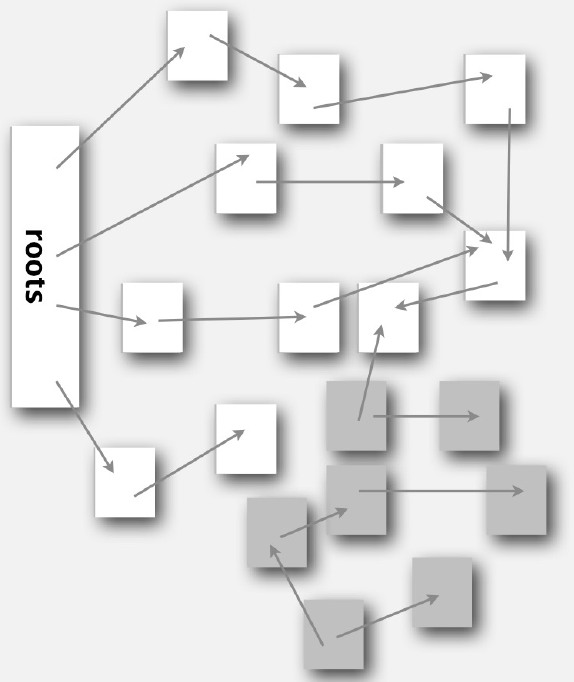
Path Finding#
- Parent-link representation of paths from \(s\)#
Maintain an integer array \(edgeTo[]\)
Interpretation: \(edgeTo[v]\) is the next-to-last vertex on a path from \(s\) to \(v\)
To reconstruct path from \(s\) to \(v\), trace \(edgeTo[]\) backward from \(s\) to \(v\) (and reverse)
Undirected Graphs#
- Problem#
Given an undirected graph \(G\) and vertex \(s\), find all vertices connected to \(s\)
- Solution#
Treat undirected graph as a digraph, replacing each edge with two antiparallel edges
DFS (to visit a vertex v)
------------------------
Mark vertex v.
Recursively visit all unmarked
vertices w adjacent to v
- Typical applications#
Find all vertices connected to a given vertex Find a path between two vertices
- To visit vertex \(v\): #
Mark vertex \(v\)
Recursively visit all unmarked vertices adjacent from \(v\)
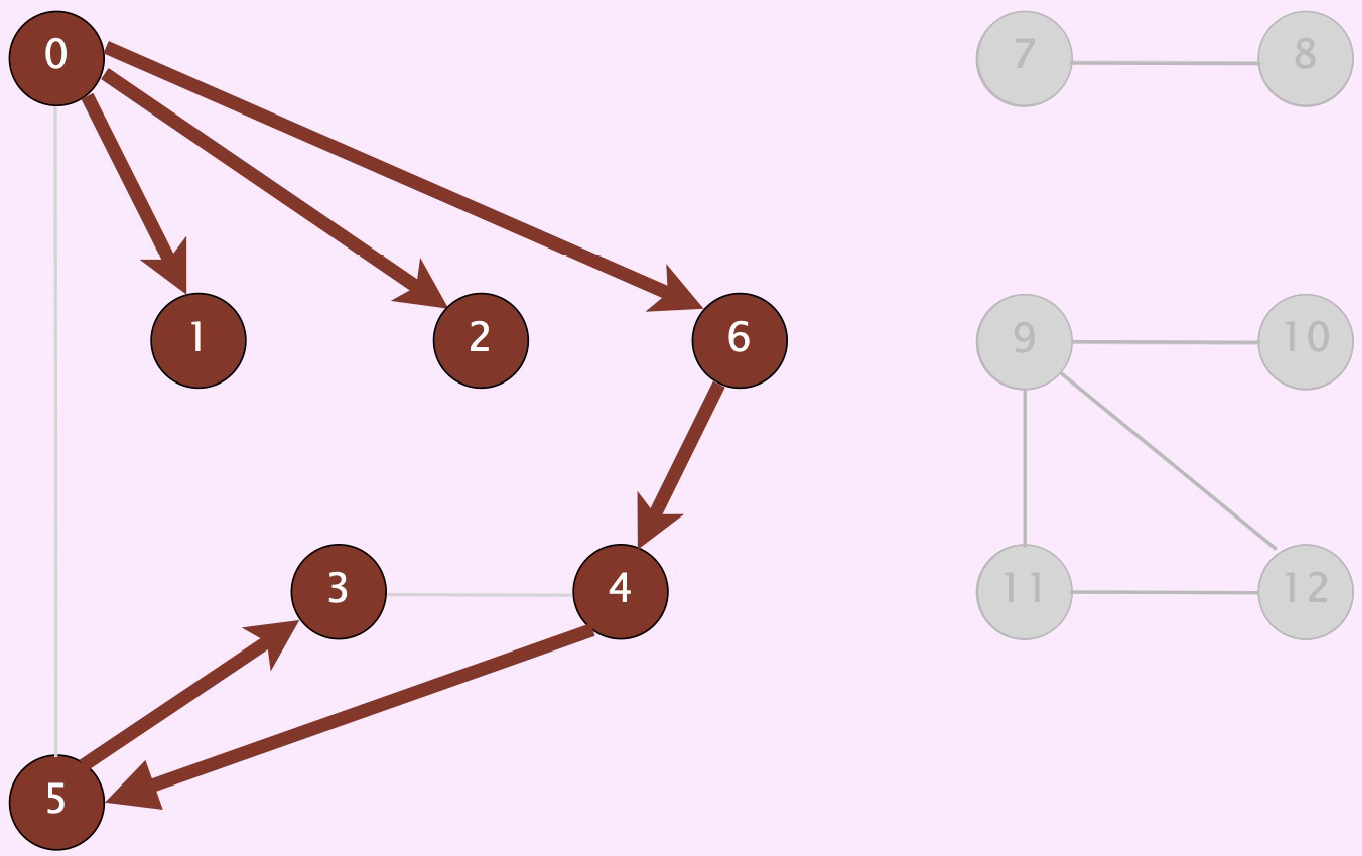
Fig. 81 vertices connected to \(0\) (and associated paths)#
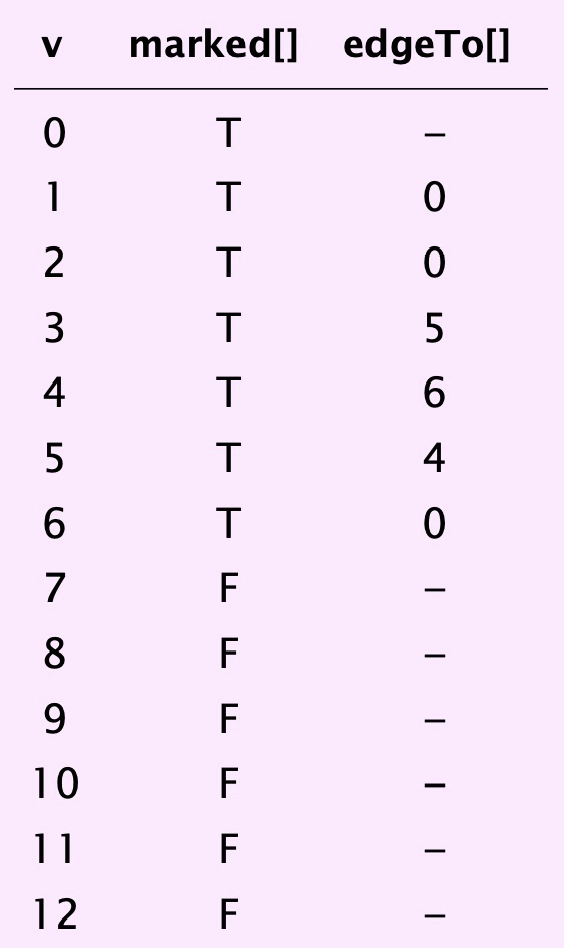
- Tree traversal#
Many ways in a binary tree
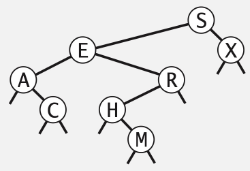
Fig. 82 parent-link representation of paths from vertex \(0\)#
- Graph search#
Many ways to explore a graph
DFS preorder: vertices in order of calls to \(dfs(G,v)\)
DFS postorder: vertices in order of return calls from \(dfs(G,v)\)
Breadth-first: vertices in increasing order of distance from \(s\)


